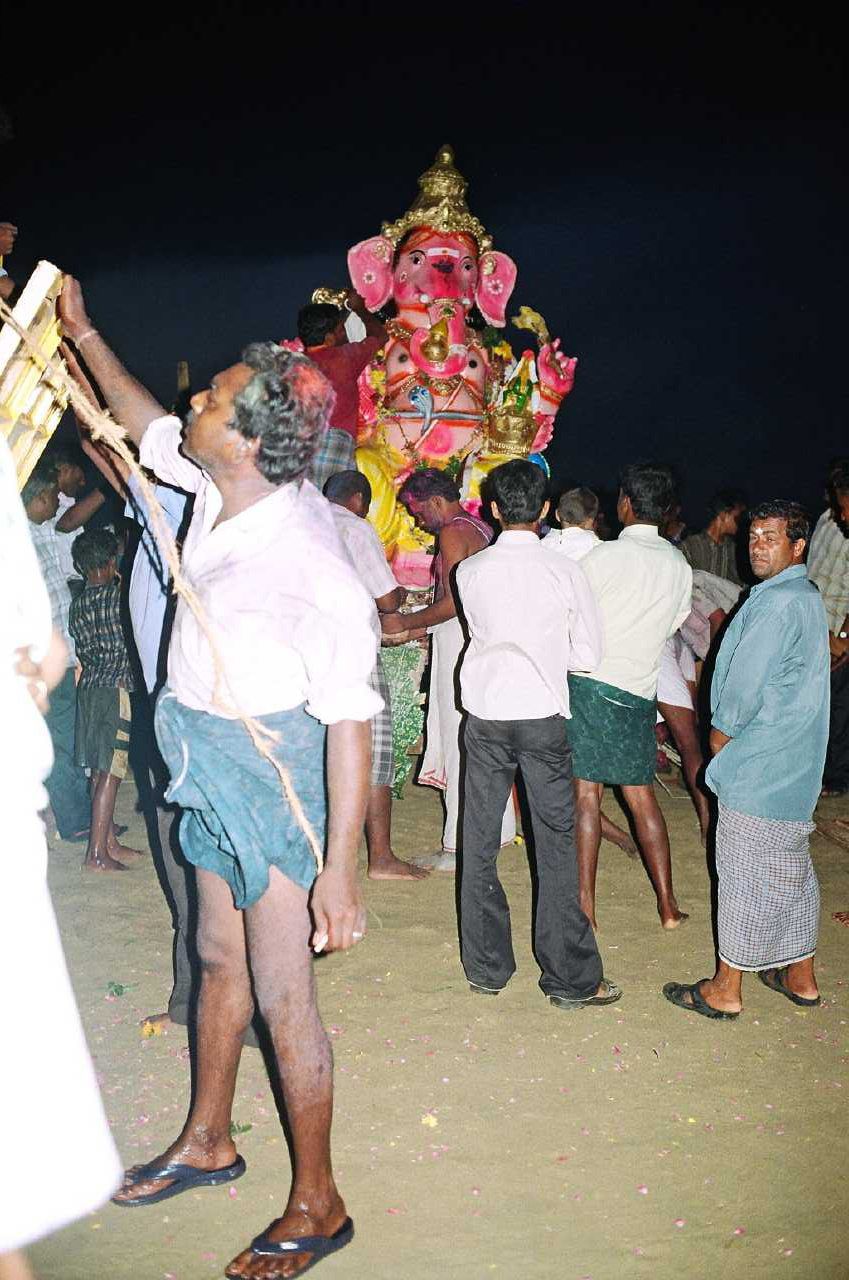
Vinayaka Chaturthi, Tranquebar 2006-2007
Festival at night celebrating the birthday of the Hindu god Ganesh, in Tamil also often called Vinayaka. The festival is studied by associate professor Peter B. Andersen in relation to the Tranquebar Initiative of the National Museum of Denmark (2004-2016). Andersen describes how the Vinnayaka’s birthday was celebrated traditionally only within the families who worshiped Vinayaka as their family god. However, from the late 1990s certain caste groups in Tranquebar and villages further inland have begun to utilize the festival as an event of Hindu mobilization and started to arrange that statues of Vinnayaka are put up in streets in the villages for his birthday. Next the statues are each transported in their long procession to the seashore at Tranquebar and in front of Fort Dansborg the statues are left in the sea to demolish. In 2007 some of the processions on their way to Tranquebar developed into street fights with groups of other religious faiths and the police arrested one of the leaders who had tried to create conflict.
Tranquebar – or Tharangampadi – is a village on the Coromandel Coast of south India. A large part of the population in Tranquebar are fishers or working within business related to fishing. The language is Tamil and the majority of the inhabitants adhere to religious traditions of Hinduism, but there are also smaller communities relating to Christianity or Islam.
During India’s colonial period, Tranquebar functioned as a Danish trade station from 1620-1845. The place has a rich intercultural history, documented in historical buildings and rich archival sources as well as old and new ethnographic collections of material items, photos and accounts of everyday life.